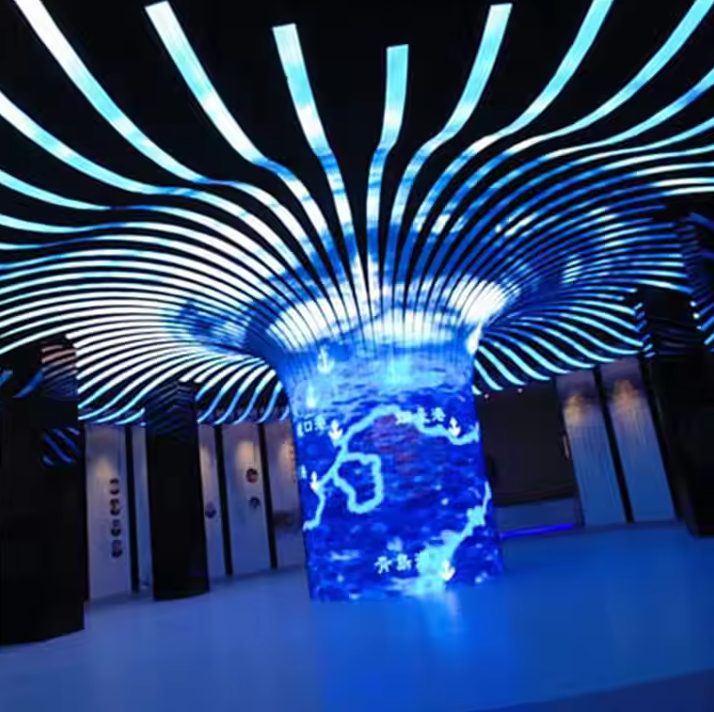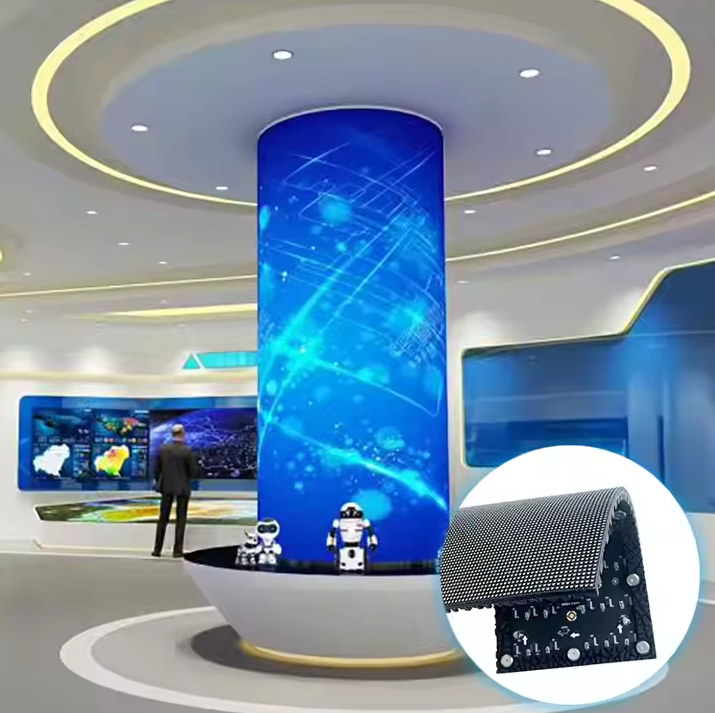
What should I consider when buying a cylindrical LED screen?
In recent years, the LED display market has shown earth-shaking changes, and its application fields are becoming more and more extensive, such as hotels, conference rooms, bars, exhibition venues, high-end shopping malls, stages, casino game halls, science and technology museums…etc. With the changes in the LED display market, LED screens have also undergone tremendous changes. From LED flat display to LED curved screen, LED spherical screen, LED cylindrical screen, LED cube screen, LED cone screen, etc., among which LED cylindrical screen is particularly attractive to users.
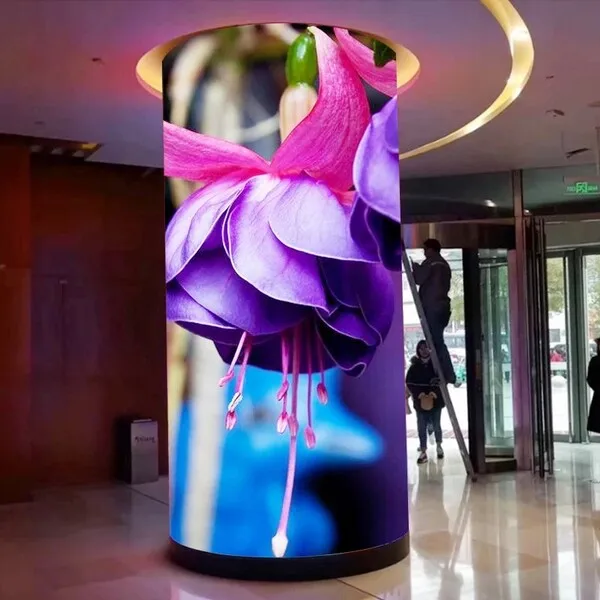
The cylinder LED screen meets people’s personalized needs for audio-visual experience. It can display complete image content in a full range of 360 degrees, watch in a full range of 360 degrees, display multiple pictures simultaneously, completely eliminate viewing dead zones, and attract the public’s attention to the maximum extent. Better adapt to the overall structure and use requirements of the environment. The LED cylindrical screen is made of soft modules, which is super soft and can be bent arbitrarily between 1-120 degrees. It also has high brightness, high precision, wide viewing angle, energy saving and environmental protection, good stability, and good wind resistance. Easy installation, waterproof and other advantages.
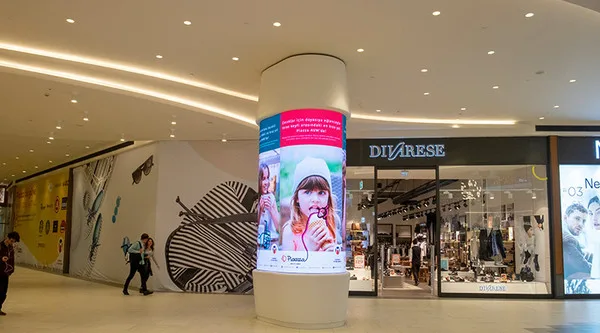
So what factors do merchants need to consider when purchasing cylinder LED screen? Judging from the LED display market sales and user feedback in recent years, merchants are still paying more attention to two factors of LED displays: price and quality.
The price of LED cylindrical includes these aspects
soft module price, screen structure price, auxiliary material cost, integrated wiring, transportation cost, installation and debugging cost, etc.
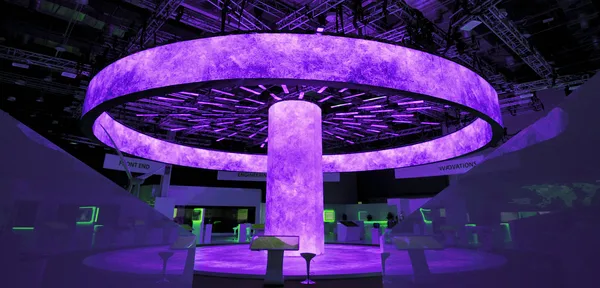
The quality of the LED cylindrical screen is related to these aspects
- Flatness, the surface flatness should be within ±1mm to ensure that the displayed image is not distorted, local bulges or recesses will cause
- Brightness, generally indoors The brightness of the full-color screen should be above 800cd/m2, and the brightness of the outdoor full-color screen should be above 5500cd/m2.
- White balance effect, the white balance effect is one of the important indicators of the display screen. Pay attention to whether the white color is bluish or yellowish-green.
- Color reproducibility, that is, the color displayed on the display screen must be highly consistent with the color of the playback source.
- Whether there are mosaics and dead spots, such as the constant light. Or a small square square that is often dark, indicating that the module is dead.
- There are no color blocks: Color blocks refer to obvious color differences between adjacent modules.
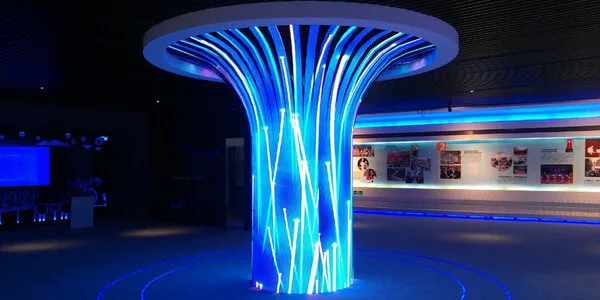
Generally speaking, different forms of production methods, brands, materials and other factors will lead to price differences between LED cylindrical screens. Merchants need to provide detailed plans and quotations based on your project conditions.
